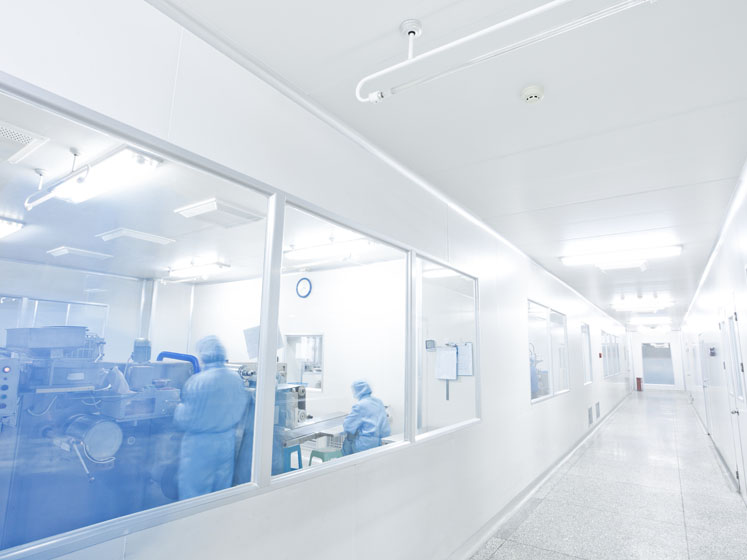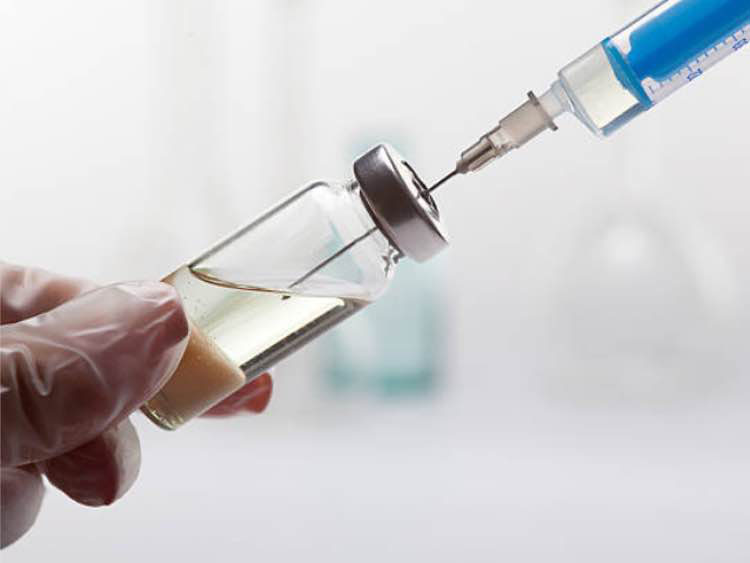All drugs approved by the US Food and Drug Administration (FDA) must be pure, effective and fit for intended use; but, above all, they must be safe. Developers and manufacturers take steps to ensure that any drug product will be reliably free from contamination throughout its lifetime.
However, for both conventional and biologic drugs whose composition or mode of delivery puts patients at additional risk of infection, companies must go to extra lengths to negate these hazards. These drugs must be produced in an aseptic lab environment that’s capable of sterile fill-finish manufacturing.
By mixing, packaging and labelling these drugs under aseptic conditions, companies can prevent the growth of bacteria that degrade the product, reduce its shelf-life and put patients at risk of developing infections caused by contaminated drugs.
The demand for sterile fill facilities is shifting. The rising number of large molecule biologic drugs and therapies for precision medicine is increasing the need for facilities to produce small(er) batches. To ensure that new drugs advance steadily through clinical trials, biomanufacturers must carefully select a partnering site that is experienced in the specialised techniques necessary to manufacture biologics on a reasonable timeline.
The changing sterile fill-finish landscape
Sterile fill is used to manufacture numerous drug forms. The FDA requires that any drug that cannot contain preservatives and/or those that are administered through inhaled, parenteral, ophthalmic or otic routes must be sterile when delivered to patients. Injectables must further be manufactured by a more intensive variation of the sterile fill technique: aseptic fill.
Depending on the batch size needed, sterile fill manufacturing can be done at a large sterile fill contract manufacturing organisation (CMO) or at a contract development manufacturing organisation (CDMO) that specialises in small-medium batch sterile fill.

Large-scale drug manufacturers can readily secure fill slots at larger sterile fill CMOs, but this makes it difficult for small-batch developers to secure time. Additionally, during the COVID-19 pandemic, most large-scale sterile fill CMOs in the US have been operating at capacity to produce vaccines and other large-scale products.
As a result, companies seeking to conduct small batch sterile fill for personalised medicines or advanced therapies face lengthy waitlists. Instead, to circumvent these delays and bring a new drug to market in a timely fashion, developers may consider a collaboration with a trusted aseptic processing and small batch sterile fill-finish CDMO.
Small batch sterile fill overview
Small batch sterile fill may appeal to small to medium sized pharmaceutical companies, compounding pharmacies, members of academia and the National Institutes of Health. Batch sizes tend to range from 10,000–50,000 units of drug product or less. The entire manufacturing process requires extensive resources and an experienced team trained in this highly specialised discipline to do the meticulous planning and execution to successfully produce each batch of drug product.
The entire sterile fill-finish manufacturing process is contained within purpose-built aseptic rooms that host an array of equipment and processes. All containers, lids and reagents necessary to make a new drug are sterilised before being transferred to the aseptic rooms, where they are then combined.
At minimum, an aseptic lab will have a vial filler and capper. Larger labs will have a contained system to mix the product, transfer it to filling equipment, fill the receptor vessel (syringe or vial) and label and cap the product. To ensure ongoing and terminal sterilisation of the product, facilities have equipment such as autoclaves and dry heat ovens and will implement cleaning validation steps for all aspects of the process.
Manufacturing considerations for biologics
Sterile fill facilities that manufacture large molecule drugs — such as cell and gene therapies —must account for the fact that they are more susceptible to degradation than conventional small molecule drugs, which can reduce potency and efficacy. Therefore, the sterile fill site should confer with developers and validate the sterile fill manufacturing process to ensure that the manufacturing process itself does not reduce the drug’s structural integrity.
To prevent biologics from breaking down or aggregating in response to shear stress, agitation or exposure to elevated temperatures, facilities will often adapt their system’s pump and fill rate, along with the size of their tubing, for more gentle treatment of the larger molecule drugs. Additionally, facilities manufacturing sensitive biologics will carefully control the temperature in the room and use alternative methods of sterilisation to minimise product degradation.
When assessing their methods, CDMOs that specialise in sterile fill for biologics are used to operating on scales that are different from those of conventional drugs: they fill at much smaller volumes and, instead of measuring concentration in weight, they are measured based on parameters such as cell numbers of viral genome concentration.
Preventing contamination
Sterile fill facilities carefully establish a baseline state of cleanliness. They carefully profile the indigenous microbial flora and how the number of these microbes changes with the seasons. Throughout the year, sites tailor their sterilisation approach based on the seasonal microbes present. Before every new batch of a drug is produced, the aseptic facility is impeccably cleaned.
Workers represent a major source of contamination, so facilities microplate potential staff to verify that they do not shed large amounts of bacteria. Furthermore, all personnel must undergo aseptic training regarding how to use the equipment within the lab and operate within a sterile atmosphere, including the proper wearing of sterile gowns. However, many facilities have found that using automated processes instead of personnel is the best way to reduce contamination in the environment.

Large-scale commercial facilities often have fully automated systems for which only the bulk drug product must be mixed manually. By contrast, small-scale facilities will use largely automated systems … but these require minor manual interventions. For example, a worker may need to mix ingredients together before transferring to a sterile filler, and then they may transfer filled vials to a capper to be sealed.
Partnering with a sterile fill-equipped CDMO
When selecting an aseptic facility, drug developers should look for a customer-driven CDMO that can support the entire drug development lifecycle to ensure a fruitful partnership. An ideal CDMO should have a proven track record of manufacturing excellence and should be in good standing with the local FDA/DEA District Office. Furthermore, the CDMO should have a reputable quality assurance programme and offer testing capabilities to meet the current good manufacturing process (cGMP) regulatory requirements in the developer’s target markets.
Developers should consider the specific attributes of a facility to determine if it has the equipment necessary to manufacture their desired drug configuration in the required turnaround time. The CDMO’s management and technicians should have extensive industry knowledge and scientific expertise to support the sponsor’s manufacturing needs. By contrast, developers of biologics should be particularly careful to select a CDMO with the experience and specialised manufacturing equipment needed to work with large molecules.
To maximise convenience, developers may seek a nearby facility or may select a CDMO partner based on its proximity to public transportation and its remote viewing options. In the long-term, developers will benefit from partnering with a facility that is a dutiful steward of proprietary manufacturing steps, including having protocols to keep information private along with technology transfer capabilities should the need to move to a large-scale CMO arise.
With an increasing number of biologics on the market, the need for attentive and experienced small batch sterile facilities is on the rise. By forming a strategic partnership with a sterile fill- equipped CDMO, developers gain access to the organisation's deep industry and regulatory knowledge and aseptic manufacturing expertise.
Working together, the developer and CDMO can ensure that the drug product manufactured by sterile fill-finish is of the highest quality and free from contamination to ensure that they will be safe and of benefit to the patients who receive them.
